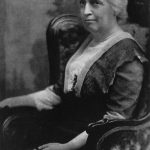
During the course of U.S. involvement in World War I, the American Library Association collected $5 million in donations for the Library War Service, a service that accumulated a collection of ten million publications and established thirty-six camp libraries across the United States and Europe. It was the ALA Library War Service’s mission to provide “a book for every man.”
The Library War Service accomplished a great deal in a short time. According to the June 1918 War Library Bulletin, there were 385,310 books shipped overseas. At that time, there were also 237 small military camps and posts equipped with book collections and 249 naval and marine stations and vessels supplied with libraries. [2] The books were well-received by soldiers and sailors alike, and unmistakably utilized widely. Vice-Admiral Albert Gleaves of the US Navy wrote:
“Do the sailors read very much? Do the soldiers read very much? I know from personal observation that the books were in constant demand, and that they were in constant circulation. They were placed as a rule near the troop compartments for the soldiers, and for the sailors they were placed in their compartments. The books were allotted to them and they would draw these books; they were not responsible in any way for their condition or what became of them. If the books were lost, that was profit and loss to the A. L. A., and didn’t concern the sailor man. There was no compulsion, no restraint; they had free access to these books.” [3]
Continue reading “The Books They Read: Library War Service in WWI”
